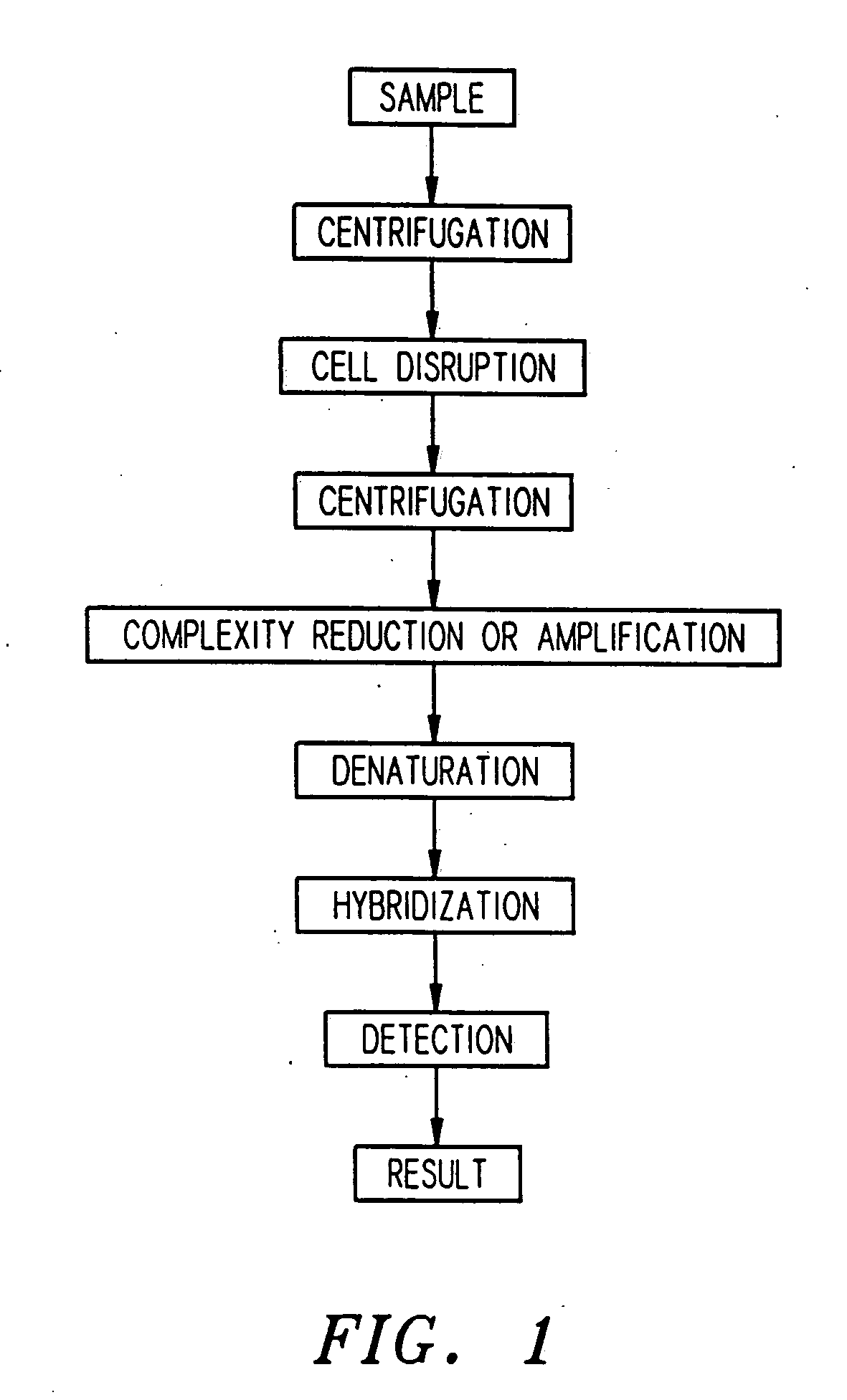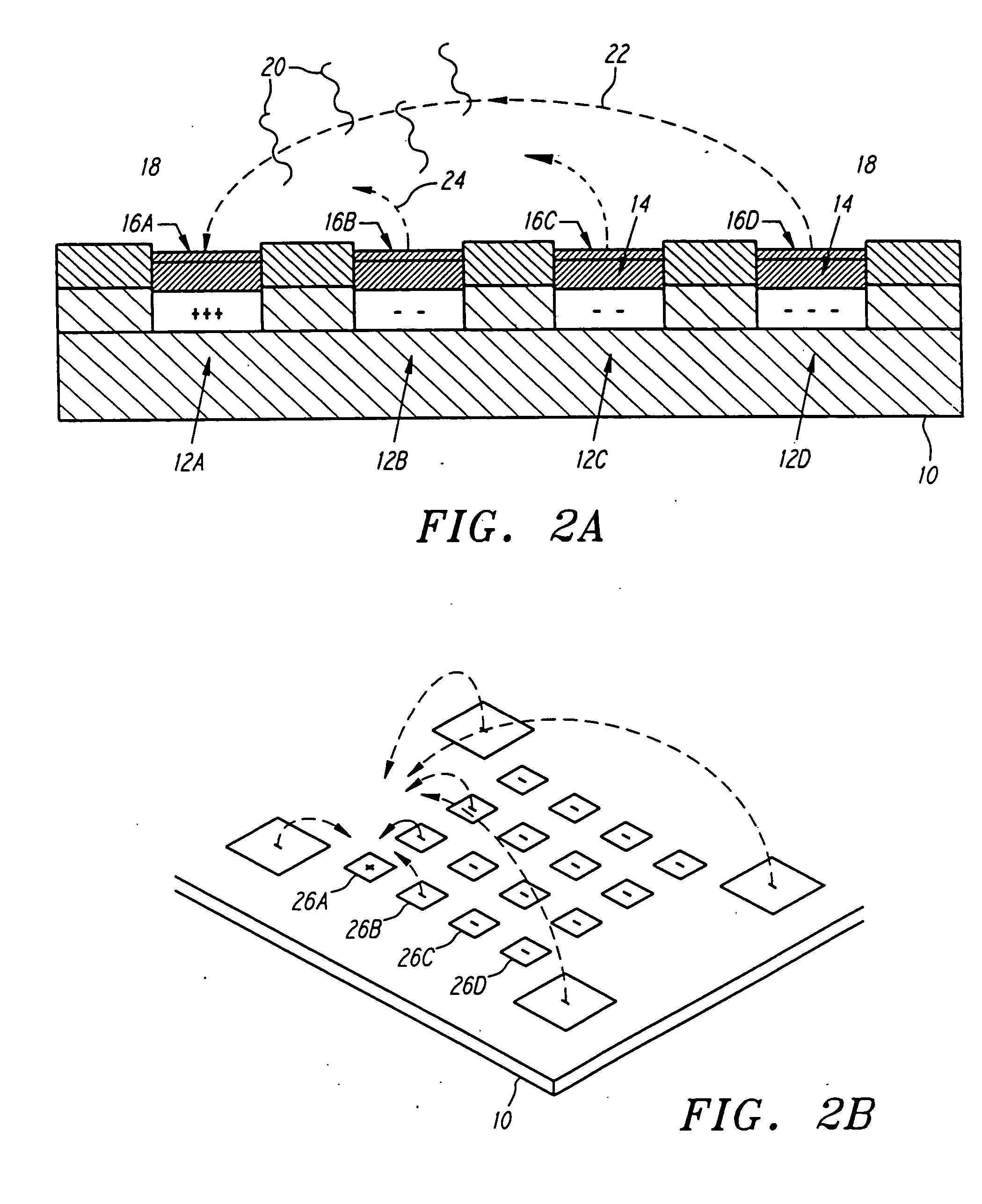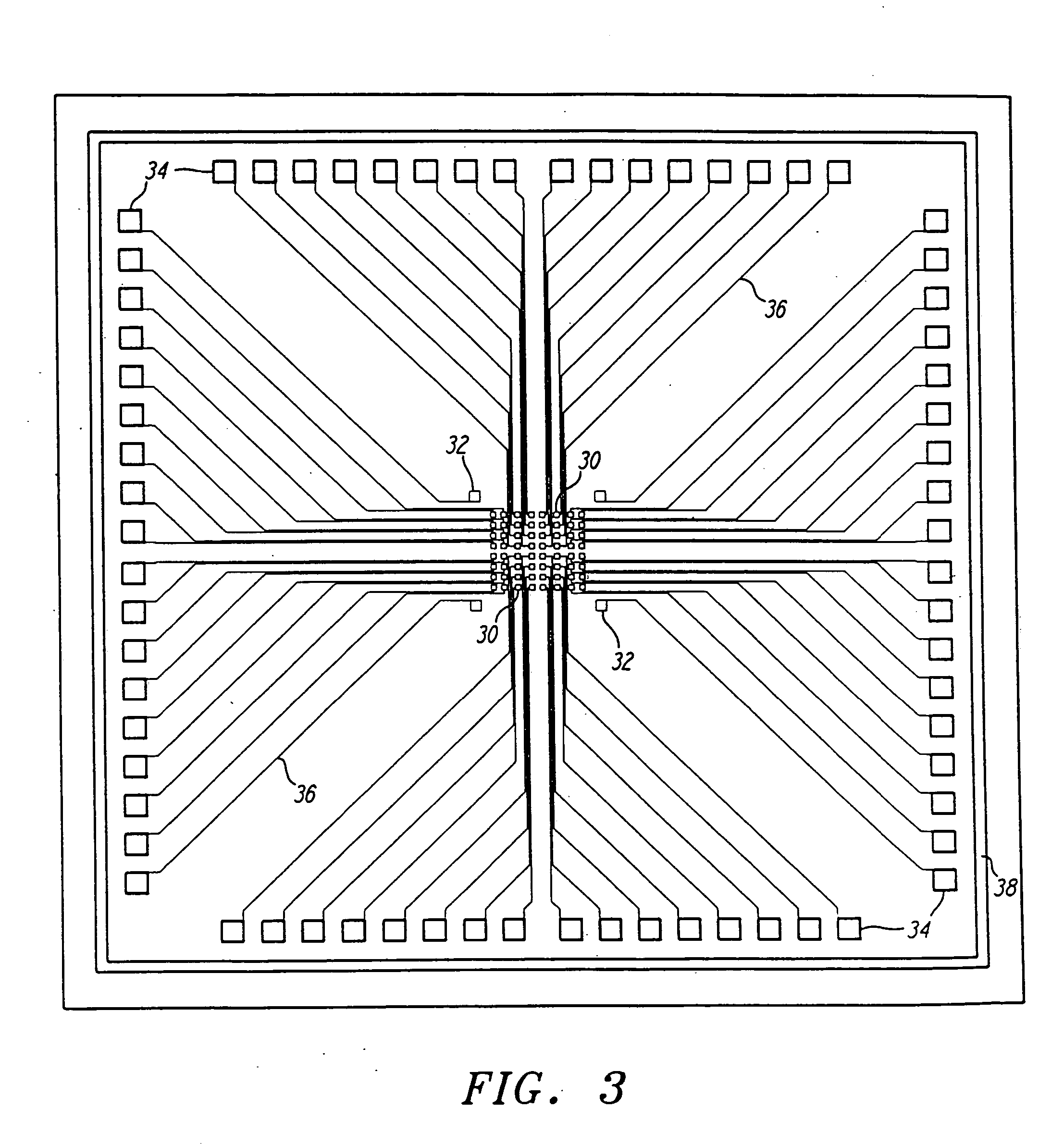Apparatus for active programmable matrix devices
a programmable matrix and active technology, applied in the field of active programmable matrix devices, can solve the problems of many techniques that are limited in their application, require a high degree of accuracy, and are difficult to achieve the effects of effective interrogation, high target mobility rate, and high ionic strength
- Summary
- Abstract
- Description
- Claims
- Application Information
AI Technical Summary
Benefits of technology
Problems solved by technology
Method used
Image
Examples
Embodiment Construction
[0063]FIGS. 2A and 2B illustrate a simplified version of the active programmable electronic matrix hybridization system for use with this invention. Generally, a substrate 10 supports a matrix or array of electronically addressable microlocations 12. For ease of explanation, the various microlocations in FIG. 2A have been labelled 12A, 12B, 12C and 12D. A permeation layer 14 is disposed above the individual electrodes 12. The permeation layer permits transport of relatively small charged entities through it, but precludes large charged entities, such as DNA, from contacting the electrodes 12 directly. The permeation layer 14 avoids the electrochemical degradation which would occur in the DNA by direct contact with the electrodes 12. It further serves to avoid the strong, non-specific adsorption of DNA to electrodes. Attachment regions 16 are disposed upon the permeation layer 14 and provide for specific binding sites for target materials. The attachment regions 16 have been labelled...
PUM
| Property | Measurement | Unit |
|---|---|---|
| temperatures | aaaaa | aaaaa |
| temperatures | aaaaa | aaaaa |
| size | aaaaa | aaaaa |
Abstract
Description
Claims
Application Information
 Login to View More
Login to View More - R&D
- Intellectual Property
- Life Sciences
- Materials
- Tech Scout
- Unparalleled Data Quality
- Higher Quality Content
- 60% Fewer Hallucinations
Browse by: Latest US Patents, China's latest patents, Technical Efficacy Thesaurus, Application Domain, Technology Topic, Popular Technical Reports.
© 2025 PatSnap. All rights reserved.Legal|Privacy policy|Modern Slavery Act Transparency Statement|Sitemap|About US| Contact US: help@patsnap.com



